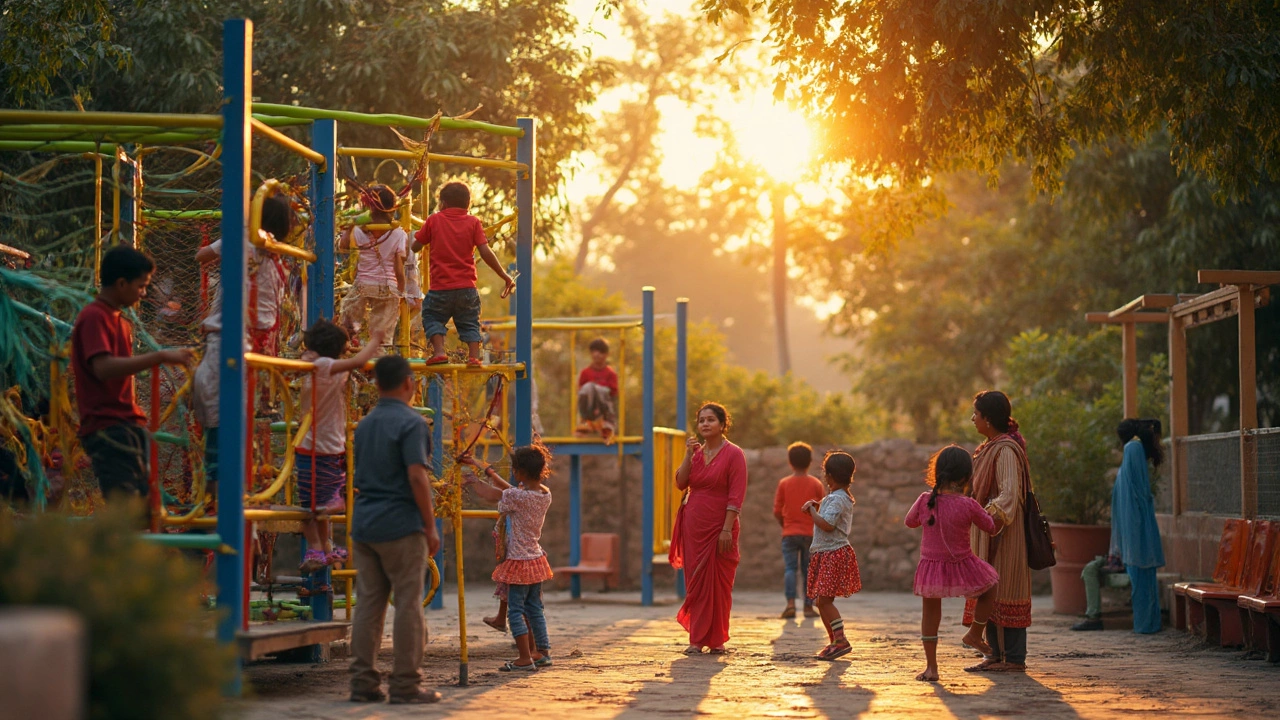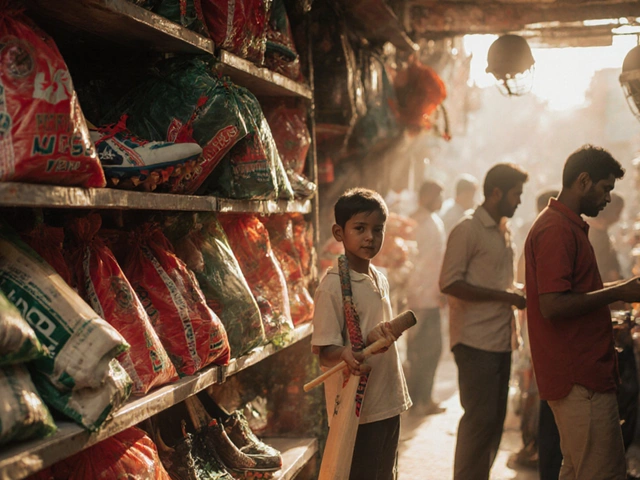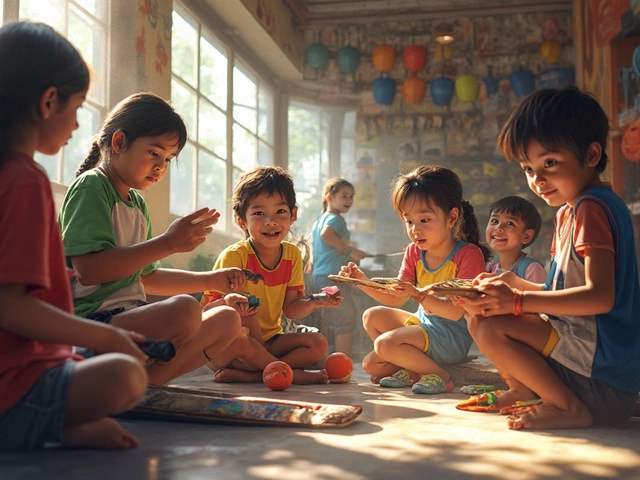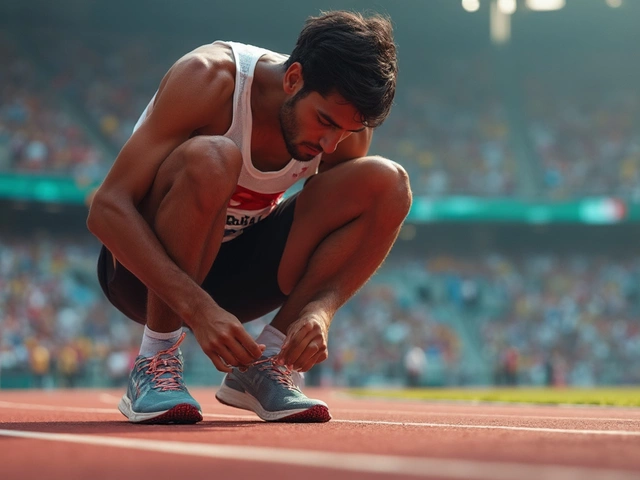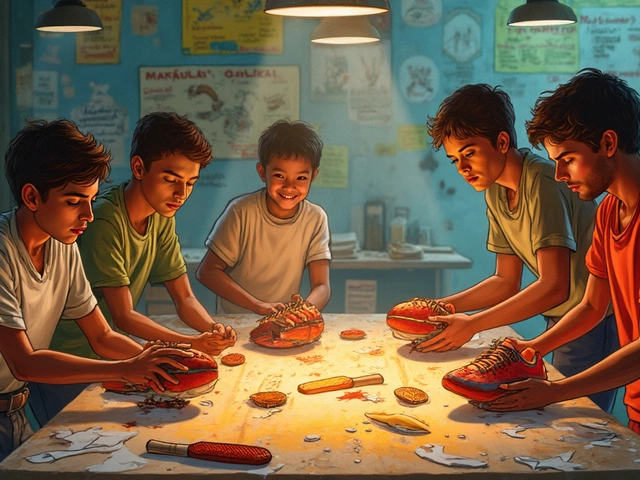Ever stood in front of a shiny new playground and wondered if your kid is actually going to use every piece? Playground equipment covers way more than just a slide or a couple of swings. It can turn an empty space into an adventure zone where kids learn to climb, balance, and share—even if they don’t realize it.
Most playground setups mix things like monkey bars, seesaws, climbing walls, and roundabouts. Each piece does something different: swings help coordination, climbing challenges balance, and group equipment like merry-go-rounds teach teamwork (and struggle for turns—believe me, I’ve seen Ishaan dig in his heels for a spot).
When you visit a park or look for equipment to install at home, don’t just look for what’s popular. Think about your child’s age, their interests, and their energy levels. It’s unreal how quickly a tired-looking swing set can become the hangout spot for neighborhood kids—if it’s the right fit for them.
- What Counts as Playground Equipment?
- Types and Their Benefits
- How to Choose the Right Equipment
- Safety and Maintenance Basics
What Counts as Playground Equipment?
This is one of those questions that sounds simple, but there’s a lot packed in. Playground equipment means the stuff you actually use to play at a playground. Think of it as the hardware of fun, designed for climbing, swinging, sliding, balancing, and all those activities kids never seem to get tired of. You’ll see this gear in parks, schoolyards, inside malls, and even some lucky backyards.
The most common pieces include:
- Swings—classic, fun, and perfect for all ages
- Slides—there’s always a line, right?
- Climbing frames or jungle gyms—fantastic for building strength and confidence
- Seesaws—teaches teamwork and balance
- Merry-go-rounds or roundabouts—think dizzy giggles and kids shouting, “faster!”
- Monkey bars—upper body training in disguise
- Bouncing equipment like spring riders
- Balance beams—great for focus and coordination
- Playhouses and forts—spark endless imaginative games
Then there’s the newer stuff: rope nets, obstacle courses, climbing walls, and inclusive swings for kids with mobility issues. Equipment can be made from wood, metal, or strong plastic. These days, more parks are mixing in natural materials—logs, rocks, even little creeks—to make spaces feel less like a gym and more like an outdoor adventure. If you saw a playground built in the last five years, you’ve noticed how bright and inviting these designs can be.
Many people forget less obvious pieces like benches or shade structures. While kids don’t play on these, parks often list them as part of a playground set to make sure families are comfortable and can spend more time there.
Here’s a look at the average breakdown of what you’ll usually see in a modern public playground:
| Equipment Type | Average per Playground |
|---|---|
| Slides | 2-4 |
| Swings (total seats) | 4-8 |
| Climbing Structures | 2 |
| Seesaws | 1-2 |
| Merry-go-rounds | 1 |
| Balance Equipment | 1-2 |
| Special Needs/Inclusion Equipment | 1-2 |
One big tip: not all playgrounds are equal. The best ones blend variety and cover a range of abilities, so all kids—including toddlers, preteens, and kids with disabilities—get their chance to play. Before you pick a park or buy any gear, look for that variety. It makes a huge difference in both fun and development for every child.
Types and Their Benefits
When people talk about playground equipment, you might picture swings and slides first. But playgrounds have really stepped up their game. Today's setups come packed with stuff that helps both with fun and skill-building. Here’s what you’ll find in most modern playgrounds and why each matters.
- Swings: Classic but still a favorite. They’re great for building core strength and balance. Kids actually improve their coordination (timing that leg kick for a higher swoosh isn’t just luck!).
- Slides: Besides being every kid’s go-to, sliding helps develop spatial awareness and balance. Climbing up the ladder works those little leg muscles, too.
- Climbers: Think monkey bars, ladders, and climbing walls. These pieces are brilliant for upper body and grip strength, and they challenge a kid’s problem-solving skills—especially the wobbly rope nets!
- Spinners & Merry-Go-Rounds: These add social fun. They boost teamwork as kids have to agree on speed and direction, and hanging on tight can help with gross motor skills.
- Seesaws: More than just up and down, seesaws teach about balance, trust, and rhythm. They’re a quick lesson on how movement affects others.
There’s real science behind the benefits, too. According to a 2023 Harvard School of Public Health report, just 15 minutes on various playground equipment can burn 75-100 calories in young kids. Plus, they found a link between outdoor equipment play and better focus in classroom settings—a teacher’s dream, right?
| Type of Equipment | Main Benefit | Age Group |
|---|---|---|
| Swings | Balance, coordination | 2-12 years |
| Slides | Spatial awareness, confidence | 2-10 years |
| Monkey Bars | Upper body strength | 4-12 years |
| Seesaws | Balance, social skills | 3-10 years |
| Climbing Walls | Strength, problem solving | 5-12 years |
One more thing—playgrounds don’t just help kids physically. A 2022 quote from pediatrician Dr. Maya Batra sums it up perfectly:
“Playground equipment isn’t just about exercise—it builds resilience, teamwork, and even early math skills as kids count, measure, and negotiate turns.”
If you spot a new piece of equipment in your local park, don’t hesitate to let your child try it. Every piece gives them something different, and a mix of activities means less chance of boredom (or sibling squabbles, if you’re like me wrangling Ishaan and his pals).
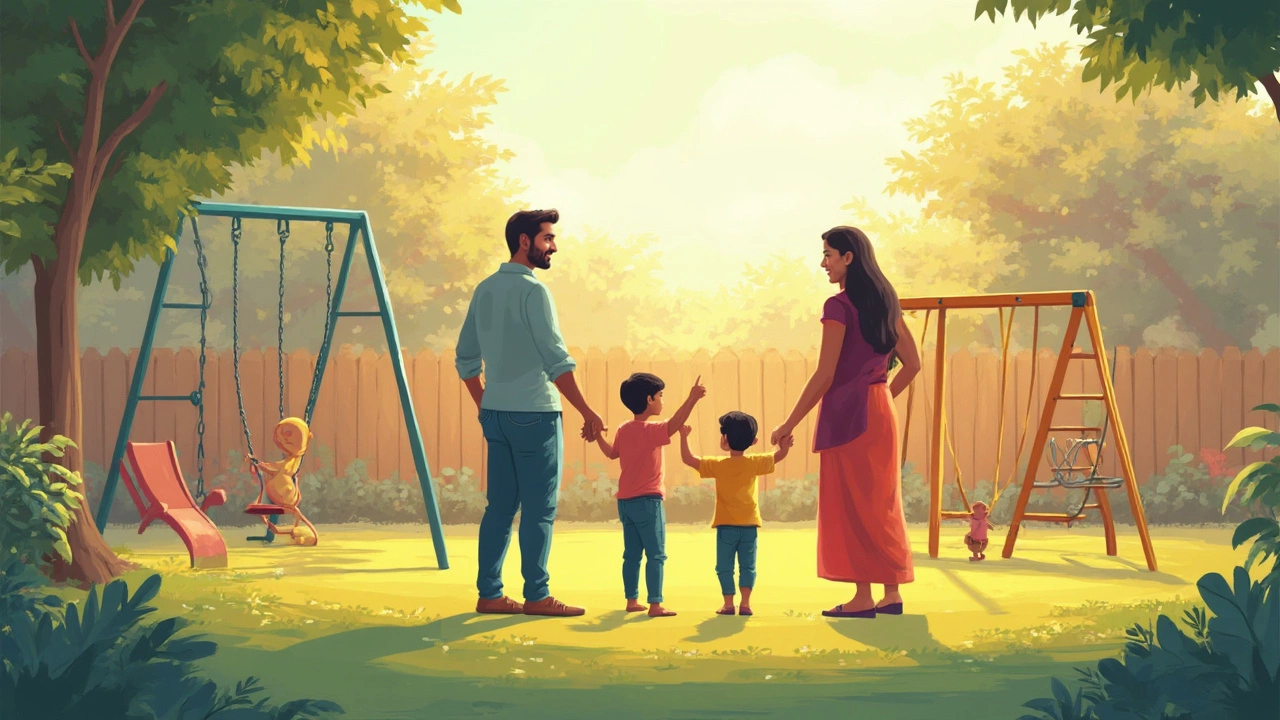
How to Choose the Right Equipment
If you’ve ever stood in the playground aisle debating which set to get, you’re definitely not alone. Picking the right playground equipment comes down to a few things: age, safety, available space, and what kids actually want to play on, not just what looks cool in a brochure.
Let’s get practical. Kids under 5 need equipment that’s lower to the ground and free of hard corners. Think bucket swings, short slides, and toddler-friendly climbers. Once kids hit school age, they crave more challenge—monkey bars, taller towers, climbing nets, and spinners.
- Playground equipment for toddlers should have railings, barriers, and ramps (not ladders).
- For grade-schoolers, add some complexity but keep fall protection like soft ground or mats in mind.
- Check for manufacturer safety standards like ASTM or EN1176 before you buy or use public equipment—they really do matter.
Location and size aren’t just about making it fit; you need fall zones and enough room so kids don’t bump into each other. Most experts say to allow at least 6 feet of open space on every side of playground equipment—and even more for swings!
Money talks, too. Specialty setups get pricey fast. Here’s a quick look at what you might pay for some common pieces:
| Equipment Type | Recommended Age | Average Price (USD) |
|---|---|---|
| Toddler Swing Set | 2-5 years | $100 - $400 |
| Climbing Dome | 5-12 years | $150 - $700 |
| Slide (stand-alone) | 3-10 years | $120 - $500 |
| Monkey Bars | 6-12 years | $200 - $800 |
If you want to make your backyard the go-to spot for your kid’s friends, ask them what they want. Sometimes a balance beam or small climbing wall gets used more than an expensive tower aimed at someone else’s crowd. And don’t forget regular checks for loose bolts or worn surfacing—safe equipment is equipment that gets played on, not patched up in a rush after an accident.
Safety and Maintenance Basics
When it comes to playground equipment, safety isn’t just about telling kids to be careful. A quick check for loose bolts or rusty chains can honestly make a huge difference in preventing injuries. The U.S. Consumer Product Safety Commission found that over 200,000 kids end up in emergency rooms each year because of playground mishaps—and most of these could’ve been avoided with basic maintenance.
Here’s what you should watch out for during regular playground inspections:
- Look for sharp edges or pinching spots on swings, slides, and climbing frames.
- Test for loose bolts or screws—especially on moving parts like see-saws and swings.
- Check that any surfacing (think rubber mats or mulch) is at least 12 inches deep, especially under climbing areas.
- See if there’s visible rust, splinters, or broken plastic. If there is, it’s time to repair or replace.
- Make sure slides and swings aren’t too close together to avoid traffic jams and collisions.
Trusting your eyes and instincts goes a long way, but official advice never hurts. Take this straight from the National Program for Playground Safety:
“Supervision and regular maintenance are the top two ways to keep the playground experience fun and injury-free.”
Most injuries happen on falls. To minimize the risk, use soft surfaces like wood chips, pea gravel, or commercial rubber under all equipment. For backyard setups, avoid hard ground—concrete and asphalt are a no-go. The next table shows which surfaces reduce injury risks best:
| Surface Material | Recommended Depth | Shock Absorption |
|---|---|---|
| Wood mulch | 12 inches | Good |
| Rubber mulch | 6 inches | Excellent |
| Sand | 12 inches | Moderate |
| Pea gravel | 12 inches | Moderate |
| Grass/Soil | — | Poor |
Make a habit of checking the playground every couple of weeks. It doesn’t have to be a big fuss—just a quick look around before Ishaan runs free is usually enough. And if you’re unsure about any equipment, it’s safer to skip it until you can fix or replace it.
